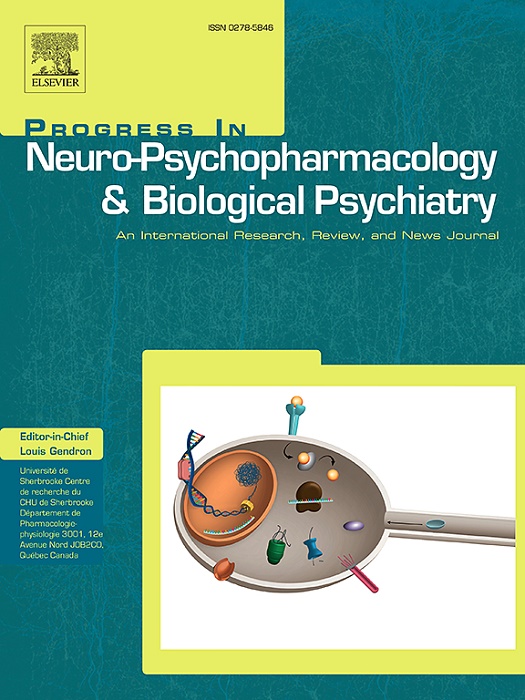Stable construction and analysis of MDD modular networks based on multi-center EEG data
IF 5.3
2区 医学
Q1 CLINICAL NEUROLOGY
Progress in Neuro-Psychopharmacology & Biological Psychiatry
Pub Date : 2024-09-19
DOI:10.1016/j.pnpbp.2024.111149
引用次数: 0
Abstract
Background
The modular structure can reflect the activity pattern of the brain, and exploring it may help us understand the pathogenesis of major depressive disorder (MDD). However, little is known about how to build a stable modular structure in MDD patients and how modules are separated and integrated.
Method
We used four independent resting state Electroencephalography (EEG) datasets. Different coupling methods, window lengths, and optimized community detection algorithms were used to find a reliable and robust modular structure, and the module differences of MDD were analyzed from the perspectives of global module attributes and local topology in multiple frequency bands.
Results
The combination of the Phase Lag Index (PLI) and the Louvain algorithm can achieve better results and can achieve stability at smaller window lengths. Compared with Healthy Controls (HC), MDD had higher Modularity (Q) values and the number of modules in low-frequency bands. In addition, MDD showed significant structural changes in the frontal and parietal-occipital lobes, which were confirmed by further correlation analysis.
Conclusion
Our results provided a reliable validation of the modular structure construction method in MDD patients and contributed strong evidence for the changes in emotional cognition and visual system function in MDD patients from a new perspective. These results would afford valuable insights for further exploration of the pathogenesis of MDD.
基于多中心脑电图数据的 MDD 模块化网络的稳定构建与分析。
背景:模块化结构可以反映大脑的活动模式,探索模块化结构有助于我们了解重度抑郁障碍(MDD)的发病机制。然而,我们对重度抑郁症患者如何建立稳定的模块化结构以及模块是如何分离和整合的知之甚少:我们使用了四个独立的静息状态脑电图(EEG)数据集。方法:我们使用了四个独立的静息状态脑电图(EEG)数据集,采用不同的耦合方法、窗口长度和优化的群落检测算法来寻找可靠、稳健的模块结构,并从多个频段的全局模块属性和局部拓扑结构的角度分析了 MDD 的模块差异:结果:相位滞后指数(PLI)和卢万算法的组合能取得更好的效果,并能在较小的窗口长度下实现稳定性。与健康对照组(HC)相比,MDD 的模块化(Q)值和低频段的模块数量更高。此外,MDD 的额叶和顶叶-枕叶结构也发生了显著变化,这一点在进一步的相关分析中得到了证实:我们的研究结果为模块结构构建方法在 MDD 患者中的应用提供了可靠的验证,并从一个新的角度为 MDD 患者情绪认知和视觉系统功能的变化提供了有力的证据。这些结果将为进一步探索 MDD 的发病机制提供有价值的见解。
本文章由计算机程序翻译,如有差异,请以英文原文为准。
求助全文
约1分钟内获得全文
求助全文
来源期刊
CiteScore
12.00
自引率
1.80%
发文量
153
审稿时长
56 days
期刊介绍:
Progress in Neuro-Psychopharmacology & Biological Psychiatry is an international and multidisciplinary journal which aims to ensure the rapid publication of authoritative reviews and research papers dealing with experimental and clinical aspects of neuro-psychopharmacology and biological psychiatry. Issues of the journal are regularly devoted wholly in or in part to a topical subject.
Progress in Neuro-Psychopharmacology & Biological Psychiatry does not publish work on the actions of biological extracts unless the pharmacological active molecular substrate and/or specific receptor binding properties of the extract compounds are elucidated.

 求助内容:
求助内容: 应助结果提醒方式:
应助结果提醒方式:


